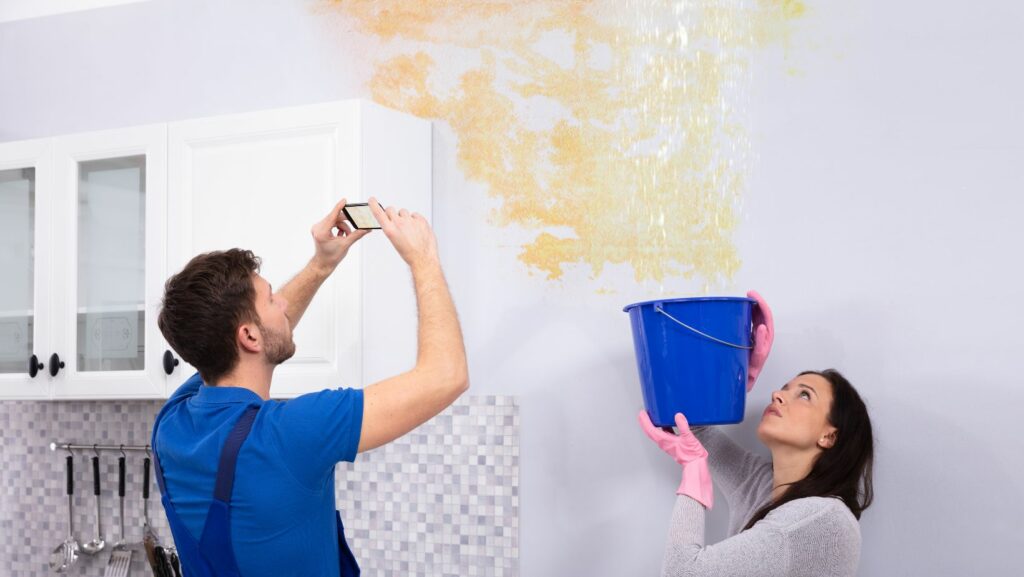Water damage restoration is a critical process that ensures the recovery and preservation of properties affected by water intrusion. Whether due to natural disasters like floods, severe weather conditions, or plumbing failures, water damage can have devastating effects on buildings and their contents. This process involves a series of steps designed to mitigate damage, prevent further deterioration, and restore the property to its pre-damage condition. We will explore the intricacies of water damage restoration by verg restoration vancouver wa, the stages involved, and the importance of timely intervention.
The Nature of Water Damage
Water damage occurs when excess water accumulates in areas where it shouldn’t, causing harm to structures, belongings, and even health. Water can infiltrate homes and businesses through various means, such as burst pipes, leaky roofs, or natural disasters. The type of water involved—clean, grey, or black—affects the severity and approach to restoration. Clean water from sources like broken supply lines poses less risk, while grey water from appliances and black water from sewage or floodwaters can be hazardous, requiring more stringent remediation measures. The immediate effects of water damage include saturation of materials, swelling of wood, rusting of metal, and potential electrical hazards. Long-term consequences can be severe if not addressed promptly, including structural weakening and mold growth.
Initial Assessment and Safety Measures
The first step in water damage restoration is a thorough assessment of the extent of the damage. Professionals conduct an initial inspection to determine the source of water, categorize the type of water, and assess the level of contamination. This evaluation guides the development of a tailored restoration plan. Safety is paramount during this phase. Electric and gas supplies may be shut off to prevent accidents, and protective gear is worn to avoid exposure to contaminants. The assessment also involves identifying areas at risk of secondary damage, such as mold growth, which can begin within 24-48 hours of water intrusion. Quick and accurate assessment is crucial for effective remediation.
Water Extraction and Drying
Once the assessment is complete, the next step is water extraction. This process involves removing standing water using powerful pumps and vacuums.

Swift water removal is essential to prevent further damage and reduce drying time. After the bulk of the water is extracted, the focus shifts to drying and dehumidification. Industrial-grade dehumidifiers and air movers are deployed to remove moisture from affected areas and materials. This stage can take several days to weeks, depending on the extent of the water damage. Monitoring equipment such as moisture meters and thermal cameras are used to track the drying process and ensure all areas are adequately dried, preventing mold growth and structural issues.
Cleaning and Sanitizing
Cleaning and sanitizing are vital components of water damage restoration, especially when dealing with grey or black water. Contaminants must be thoroughly removed to ensure a safe living or working environment. All affected materials, such as carpets, upholstery, and personal items, are cleaned and sanitized. Some items may require specialized treatments, while others might be irreparably damaged and need disposal. High-grade cleaning agents and antimicrobial treatments are used to disinfect surfaces and prevent mold and bacterial growth. Air scrubbers and fogging equipment can also be employed to purify the air, removing any lingering contaminants or odors. This step is critical in restoring hygiene and safety to the affected property.
Repair and Restoration
The final stage in the water damage restoration process is repair and restoration. This phase involves repairing or replacing damaged structures and materials to restore the property to its original condition. Repairs can range from minor drywall patches and floor repairs to major reconstruction efforts. Attention to detail is crucial to ensure the repaired areas blend seamlessly with the existing structure. Restoration also includes cosmetic aspects, such as painting and refinishing surfaces to match the pre-damage appearance. This stage is often the most time-consuming and can require coordination with contractors and insurance companies to ensure that all necessary repairs are covered and completed to the required standards.
Importance of Timely Intervention
Timely intervention in water damage situations cannot be overstated. The longer water sits, the more extensive the damage becomes, leading to higher repair costs and more significant health risks.

Immediate action helps mitigate the initial damage and prevents secondary issues like mold growth and structural degradation. Mold can begin to grow within 24-48 hours of water exposure, posing serious health risks such as respiratory problems and allergic reactions. Additionally, structural components like wood and drywall can weaken over time, leading to potential collapse and increased repair expenses. Rapid response not only reduces damage but also speeds up the recovery process, allowing occupants to return to their normal routines more quickly.
Water damage restoration is a multifaceted process crucial for preserving property and health. From initial assessment and water extraction to drying, cleaning, and final repairs, each stage requires careful execution and attention to detail. Timely intervention is essential to minimize damage and expedite recovery. The integration of advanced technology has significantly enhanced restoration practices, making them more efficient and effective. However, the challenges posed by each unique water damage incident demand a comprehensive and adaptable approach. Understanding the complexities and importance of water damage restoration underscores the need for proactive measures and informed decision-making to protect and restore affected properties.


More Stories
Beyond the TFSA and RRSP: Non-Registered Investment Accounts in Canada
From Wet to Wow: How Basement Waterproofing Unlocks Hidden Home Potential
From Functional to Fabulous: How a Bathroom Renovation Enhances Your Daily Routine